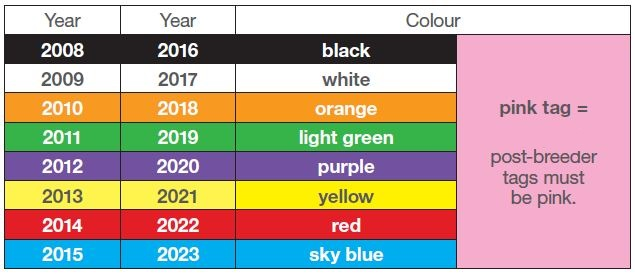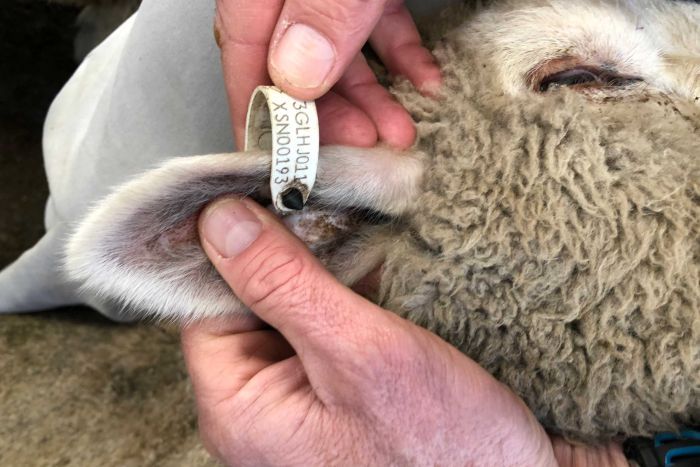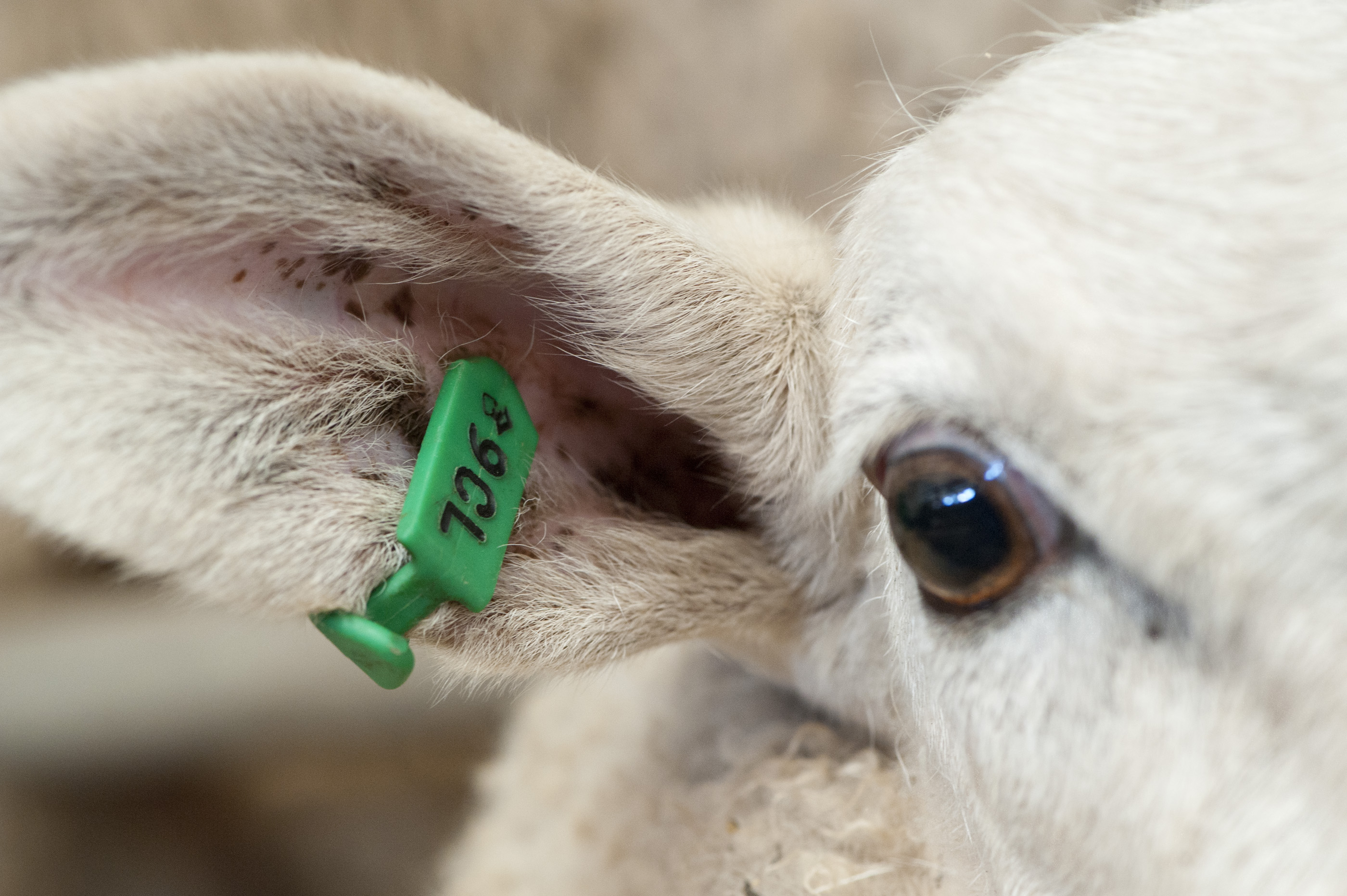Ear tags provide unique identification of sheep
Sheep ear tagging is an essential part of the National Livestock Identification System (NLIS), Australia’s system for identifying and tracing sheep and goats, and is a mandatory requirement in some states in Australia. All sheep movements are recorded onto the NLIS database which allows them to be traced back to their property of birth and last property of residence.
Livestock identification and tracking is also required by law under the Biosecurity (National Livestock Identification System) Regulation 2017 in managing and maintaining major issues, such as disease and food safety incidents, prevents theft and assists in recovering stolen animals.
All animals leaving a property must be identified with an NLIS approved device before moving, unless a permit is obtained from the state or territory authority.
Once an animal has been tagged, the tag should remain with the animal for life. If the tag stops working/falls out and the animal is no longer on its property of birth, the animal needs to be tagged with an NLIS approved post-breeder device to maintain traceability for the animal.
It is an offence to remove an NLIS tag from an animal and apply another tag, unless the animal’s original tag is not working or has fallen out.

Sheep ear tag colour system
Breeders tag: When a sheep is on its property of birth, a coloured tag which coincides with its year of birth is used to identify it. The year of birth colour system has eight colours. Each colour designates a year on a rolling cycle starting with the colour black and ending with sky blue, and then returning to black.
Post-breeders tag: If the sheep has been brought onto the property, that is, was not born on the property, a pink tag is used to show that they were from a different owner and does not have ‘lifetime traceability’.
If tags are lost or become defective, a new tag can be applied. However, if the sheep is no longer at its place of birth then a pink ‘post breeder’ tag must be used.

Placement of tags
Sheep ear tags should be placed in the right ear for females and left ear for males.

Visual ID (VID) and Electronic ID (EID) Sheep ear tags
There are two types of sheep ear tag identifications -Visual and Electronic (RFID).
They are both identical tags, the only difference is that electronic tags contain a RFID programmed microchip embedded into them which allows you to also track your sheep electronically. Both VID and EID tags are either NLIS approved or non-NLIS approved (read below).
Visually, sheep ear tags allow you to identify your sheep by its coloured coded tag on its ear.
They help indicate:
– What year the animal was born (Tag colour system)
– Its gender (tag location)
– Its location of birth through its Property Identification Code (PIC) number.
The EID tag or device contains a microchip that can be read electronically in a fraction of a second by farmers who have a suitable reader/platform. With electronic reading, transcription errors can be eliminated saving both time and labour in the paddocks whilst increasing the accuracy of the information.

Property Identification Code
All NLIS approved sheep ear tags must include the Property Identification Code (PIC), or company brand in Western Australia. A PIC is a unique eight-character number assigned by Local Land Services to a property with livestock and is a key piece of information for property tracking purposes. Sheep can be traced back to their property of birth by checking the PIC number on their tag against the PIC recorded on the movement document and looking at the movements onto and off PICs in the NLIS database.
Every property with livestock must have a PIC, if you do not have one, contact your Local Department of Primary Industries.
How to accurately identify your sheep
Sheep EID system marks each animal with its own, individual identifying number. The EID tag or device can be read electronically in a fraction of a second by producers who have a suitable reader. With electronic reading, transcription errors can be eliminated saving both time and labour in the yards whilst increasing the accuracy of your information.
Traditionally in the Australian sheep industry, data collection and sheep management occurs on a mob to mob basis. Now with EID and the NLIS system, farmers can manage and monitor each animal individually throughout its lifetime.
Within a flock there substantial variations in the characteristics that influence an animal’s production level. Identifying and understanding these variations provides opportunities to apply selection pressure, or make better informed management decisions throughout the sheep enterprise. Electronic tagging allows these variations to be captured through measuring the performance of individual sheep and for the farmers to apply decisions specific to that individual, reducing costs and labour, while at the same time maximising returns.
Data records
Depending on your own management needs, data records could include:
- Genetics/bloodlines
- Breeding history
- Weight gain
- Vaccine and parasite control history and relevant withholding
- Supplement history
- Fibre diameter measurements
- Pregnancy scanning data.
Data optimisation
With this data, farmers can optimise on:
- Selecting stock for improved current and future production
- Ram and ewe reproduction allocation
- Tracking bloodlines for pedigree matching
- Pregnacy statuses
- Using the weight information to meet market standards
- And more.
Farmdeck's RFID ear tags replaces sheep hand counting
Farmdeck has developed an automated counting and identification system for sheep, removing the need to manually count your sheep every few months. The solution consists of Radio Frequency Identificaiton Devices (RFID) that is carried on ear tags. The RFID sheep ear tags are designed and manufactured by our team, and an electronic reader will be installed on one of your paddock’s gate. The reader can capture the RFID data up to 2km, which is perfect for when you move your sheep from a paddock to another through a gate.
Through the Farmdeck app, you can see exactly which sheep has gone through the gate and which sheep is missing.
Llanelli Farm simplifying daily farm activities
Llanelli Farm in Bathurst were facing challenges with livestock tracking. Every single animal needed to be counted and managed manually once a month; a lengthy and tedious process prone to human error.
Through an all-in-one Farmdeck solution combining network connectivity, sensors, and our app, we enabled Llanelli to track and identify livestock, as well as a number of other challenges they were facing on their farm.
Sheep ear tag information according to your state
- NSW/ACT: https://www.dpi.nsw.gov.au/animals-and-livestock/nlis/sheep-goats
- VIC: http://agriculture.vic.gov.au/agriculture/livestock/national-livestock-identification-system/nlis-sheep-and-go
- QLD: https://www.business.qld.gov.au/industries/farms-fishing-forestry/agriculture/livestock/nlis/approved-devices-tags
- SA: https://pir.sa.gov.au/biosecurity/animal_health/sheep/nlis_sheep_goats
- NT : https://nt.gov.au/industry/agriculture/livestock/brand-and-identify-livestock/nlis-in-the-nt
- WA: https://www.agric.wa.gov.au/livestock-biosecurity/nlis-and-identification-sheep
- TAS: https://dpipwe.tas.gov.au/agriculture/animal-industries/identifying-selling-moving-livestock/buying-selling-sheep-and-goats/nlis-for-sheep-goats
